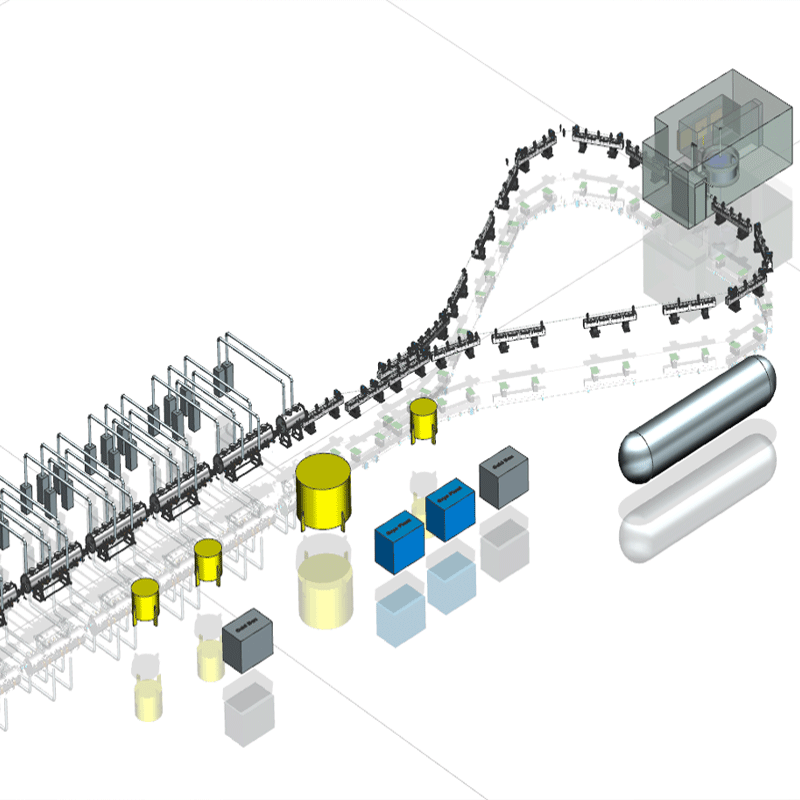Fluid flow
explosion hazard in residential buildings.
Almost every house in the Netherlands is linked to the natural gas network. This rises the explosion hazard, which is why assessment is done on the explosion risks of gas leakages. For this, a computational fluid simulation was done, where the air and natural gas flow through the house were simulated. A mechanical venting system was tested, along with the porosity of the walls. It was found that after a minute, an explosive mixture spreads over the ground floor. However, within just a few seconds and before an explosive concentration can be reached, the concentration of natural gas is already high enough for gas sensors to be triggered. The simulation is a useful tool in designing houses on gas safety and can be used to determine gas sensor placement.
Simulating a gas leak
our approach.
For a fictitious house consisting of two rooms at two different levels, we conducted a simulation with a ventilation flow rate of 50 m3/hr through partially permeable walls (mimicking flow through gaps and cracks) and a ventilation duct. Alongside ventilation, a natural gas leakage flow rate of 500 L/hr is placed at the ground level of the building. By tracking the concentration of natural gas throughout the house and over time, an estimation was made of when and where the Lower Explosive Limit (LEL) was met in the case of a gas leakage.
This comprehensive analysis allowed us to address time-dependent effects, ensuring a thorough understanding of gas dispersion dynamics within the simulated environment. Our findings provide insights into structural design in mitigating gas buildup risks. Additionally, by considering time-dependent factors, we offer assessment of the gas dispersion process, enabling informed decision-making for enhancing safety measures within residential settings.


“multiphysics for engineering purposes”
The power of approaching a multiphysics problem lies within correctly including relevant physics and excluding any redundant information on the system. Do I need to take the heat transfer into account or are they negligible? Do I need a simulation or is a hand calculation sufficiently accurate? This approach helps gaining useful information about a system, in little time as possible.
Demcon multiphysics.
Demcon multiphysics is an engineering agency with high-end expertise in the area of heat transfer, fluid dynamics, structural mechanics, acoustics, electromagnetism and nuclear physics. We support clients from a wide variety of market sectors and help them achieve their goals in research and development with deep physical insights.
We combine fundamental physical knowledge from an analytical approach with Computer Aided Engineering (CAE) simulations tools from ANSYS, MATHWORKS, COMSOL, STAR-CCM+ and FLUKA to setup, execute, analyze and evaluate numerical simulations. The use of Computational Fluid Dynamics (CFD), Finite Element Analysis (FEM / FEA), Lumped Element Modelling (LEM), Computational Electromagnetics (CEM) and Monte Carlo simulations enables us to make a virtual prototype of your design. With these techniques we can simulate the fluid and gas flows, energy exchange, heat and mass transfer, stresses, strains and vibrations in structures and the interaction of electromagnetic fields with other physical aspects like heat generation. Simulation-driven product development increases the development efficiency and reduces the product development time. Our services can therefore fully support you in the designing phase, from idea up to prototype, from prototype to final design.




